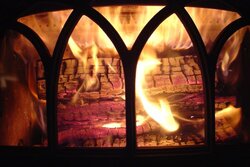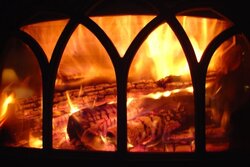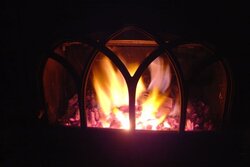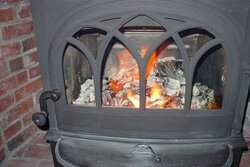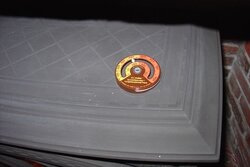I purchased and installed a Jotul Castine and a new chimney in late December. Results have been mixed. I had issues with smoke at start up and getting a good fire going. There were times when I was able to run it up to 650+ even breaking 700 once but typically, when I run full air I max out in the 500 range.
The house is new construction and is pretty tight. Cracking the window made all the difference for start up (no smoking problem anymore) and it also seemed to help with getting up to temperature quicker. I plan to install an OAK next week which should resolve that problem. Still, the stove seemed starved for air. After struggling with it a bit this morning I let the stove run and cool. This afternoon I decided to loosen the USA intake plate and I inserted a bolt into the crack. Doing so made the air intake considerably larger. As opposed to two pencil size holes the air intake is maybe 5" by (1/8 to 1/4".
The stove liked it. The splits caught much quicker and I got up to temp in half the time.
So, let me ask, just how bad of an idea is it to run it this way? I asked the dealer to get a hold of a EUR plate last week. He hasn't returned my call yet.
The house is new construction and is pretty tight. Cracking the window made all the difference for start up (no smoking problem anymore) and it also seemed to help with getting up to temperature quicker. I plan to install an OAK next week which should resolve that problem. Still, the stove seemed starved for air. After struggling with it a bit this morning I let the stove run and cool. This afternoon I decided to loosen the USA intake plate and I inserted a bolt into the crack. Doing so made the air intake considerably larger. As opposed to two pencil size holes the air intake is maybe 5" by (1/8 to 1/4".
The stove liked it. The splits caught much quicker and I got up to temp in half the time.
So, let me ask, just how bad of an idea is it to run it this way? I asked the dealer to get a hold of a EUR plate last week. He hasn't returned my call yet.


